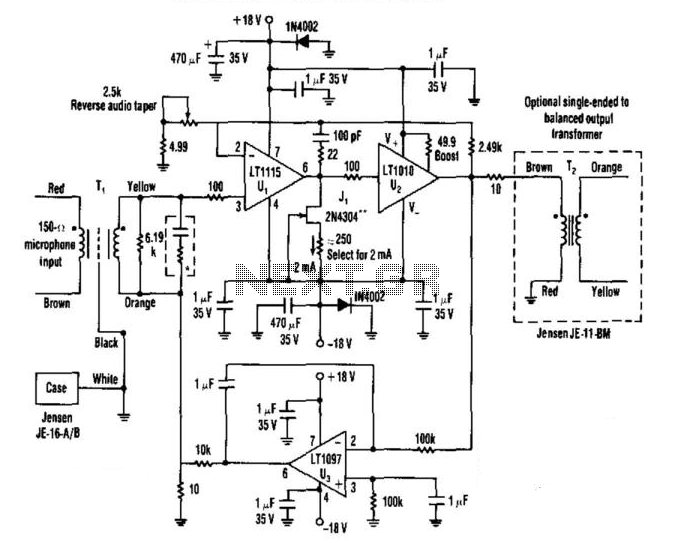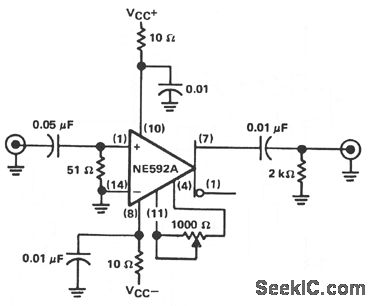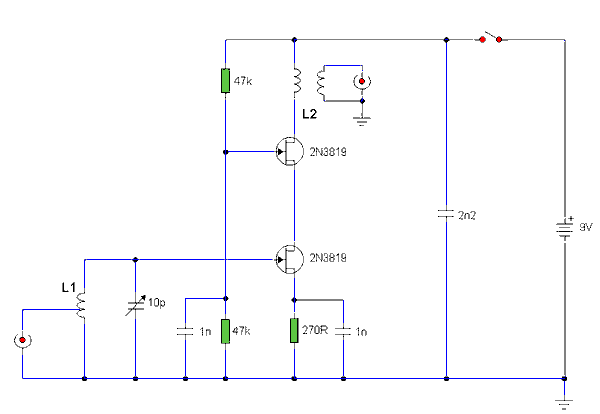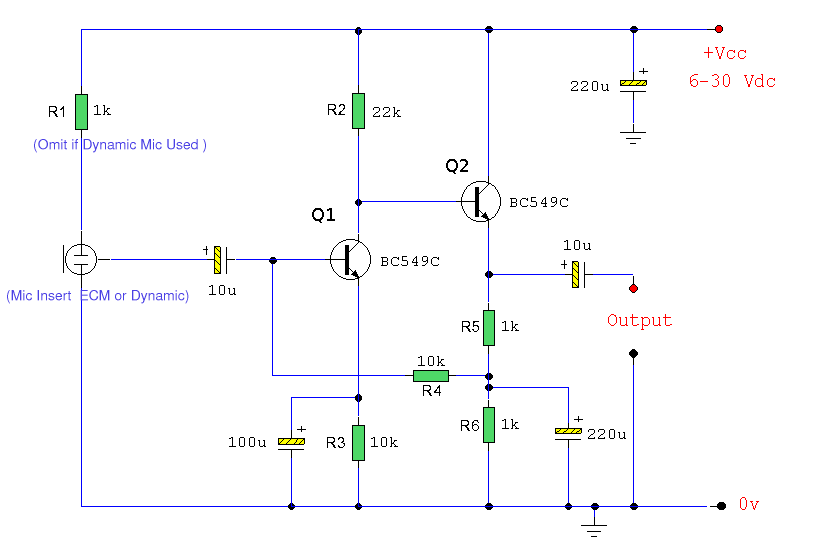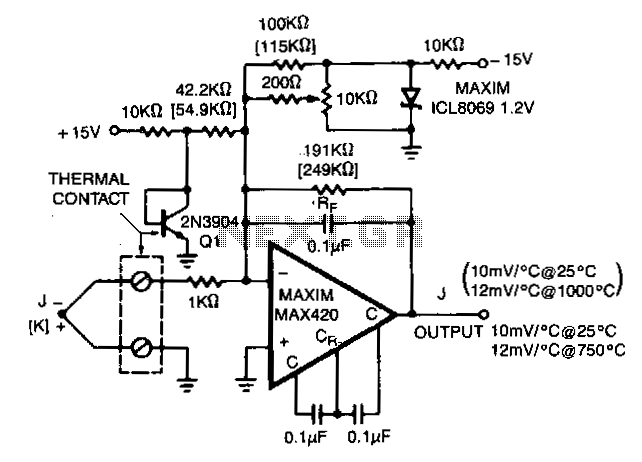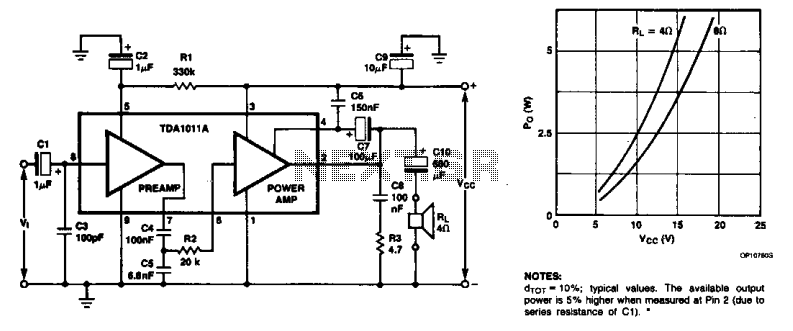
OPA37 low-noise preamplifier
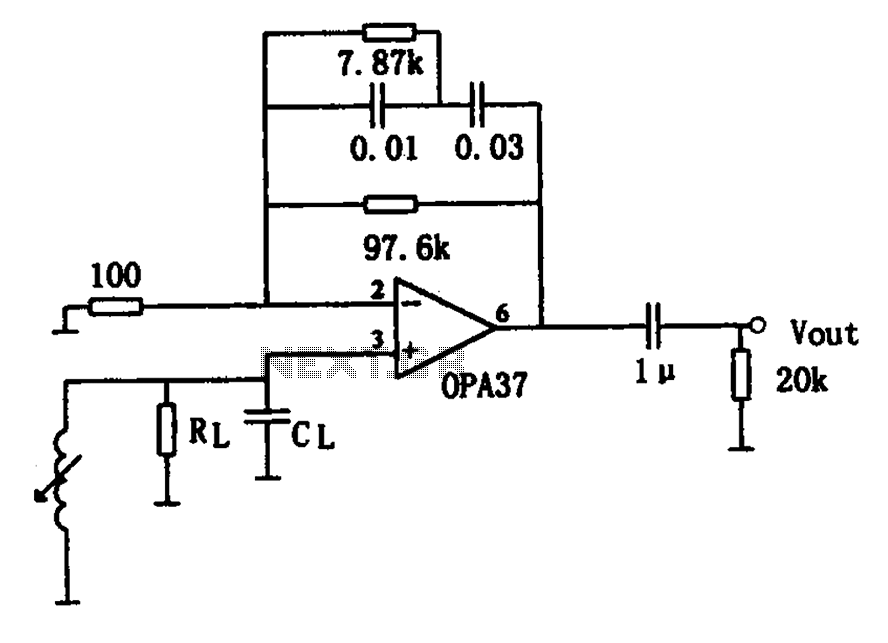
The OPA37 serves as a low-noise preamplifier. The input signal is connected to the inverting input of the OPA37 (pin 3), while the circuit components RL and CL represent the load impedance for electromagnetic pickups. The resistance and capacitance values should be selected based on the characteristics of the pickup, adhering to general parameters recommended by the manufacturer. It is advised to utilize metal film resistors with 1% tolerance for all resistors in the circuit, and to select organic film capacitors for the capacitive components. When the input signal frequency is 1 kHz, the gain of the circuit is approximately 100 times.
The OPA37 is a precision operational amplifier designed for low-noise applications, making it suitable for use in audio and sensor signal processing. In this configuration, the inverting input (pin 3) is where the input signal is applied, allowing for the amplification of weak signals from electromagnetic pickups. The load impedance, represented by RL and CL, plays a crucial role in defining the overall performance of the preamplifier.
The choice of resistors and capacitors is critical. Metal film resistors are recommended due to their low noise characteristics and tight tolerance, which ensures consistent performance across different devices. The 1% tolerance specification helps maintain accuracy in gain and frequency response, which is essential for high-fidelity applications. Organic film capacitors are preferred for their stability and low leakage, contributing to the overall noise performance of the circuit.
When designing this circuit, it is important to consider the characteristics of the electromagnetic pickups being used. These pickups may have varying impedance and frequency response, which can influence the selection of RL and CL. The gain of approximately 100 times at a frequency of 1 kHz indicates that the circuit is optimized for audio applications, where such gain can significantly enhance the signal for further processing or amplification stages.
In summary, the OPA37 low-noise preamplifier circuit is designed to effectively amplify signals from electromagnetic pickups, with careful attention paid to component selection to ensure high fidelity and low noise operation. The gain and frequency response are tailored to meet the requirements of specific applications, making this configuration versatile for various electronic signal processing tasks. As shown for the OPA37 constitute a low-noise preamplifier. Input signal is applied OPA37-inverting input (pin 3), circuit RL, CL is the load impedance electromagnetic pickups, its resistance and capacity to follow depending on the characteristics of the pickup (pickup based on general parameters recommended by the manufacturer choice of). Figure in all resistors should use metal film resistors (1% accuracy), its capacitance should choose organic film capacitors.
When the input signal is 1kHz, the gain is about 100 times.
The OPA37 is a precision operational amplifier designed for low-noise applications, making it suitable for use in audio and sensor signal processing. In this configuration, the inverting input (pin 3) is where the input signal is applied, allowing for the amplification of weak signals from electromagnetic pickups. The load impedance, represented by RL and CL, plays a crucial role in defining the overall performance of the preamplifier.
The choice of resistors and capacitors is critical. Metal film resistors are recommended due to their low noise characteristics and tight tolerance, which ensures consistent performance across different devices. The 1% tolerance specification helps maintain accuracy in gain and frequency response, which is essential for high-fidelity applications. Organic film capacitors are preferred for their stability and low leakage, contributing to the overall noise performance of the circuit.
When designing this circuit, it is important to consider the characteristics of the electromagnetic pickups being used. These pickups may have varying impedance and frequency response, which can influence the selection of RL and CL. The gain of approximately 100 times at a frequency of 1 kHz indicates that the circuit is optimized for audio applications, where such gain can significantly enhance the signal for further processing or amplification stages.
In summary, the OPA37 low-noise preamplifier circuit is designed to effectively amplify signals from electromagnetic pickups, with careful attention paid to component selection to ensure high fidelity and low noise operation. The gain and frequency response are tailored to meet the requirements of specific applications, making this configuration versatile for various electronic signal processing tasks. As shown for the OPA37 constitute a low-noise preamplifier. Input signal is applied OPA37-inverting input (pin 3), circuit RL, CL is the load impedance electromagnetic pickups, its resistance and capacity to follow depending on the characteristics of the pickup (pickup based on general parameters recommended by the manufacturer choice of). Figure in all resistors should use metal film resistors (1% accuracy), its capacitance should choose organic film capacitors.
When the input signal is 1kHz, the gain is about 100 times.
Warning: include(partials/cookie-banner.php): Failed to open stream: Permission denied in /var/www/html/nextgr/view-circuit.php on line 713
Warning: include(): Failed opening 'partials/cookie-banner.php' for inclusion (include_path='.:/usr/share/php') in /var/www/html/nextgr/view-circuit.php on line 713
